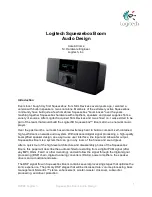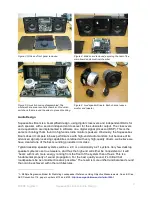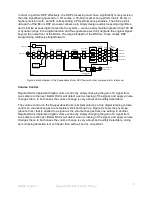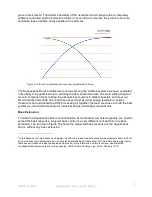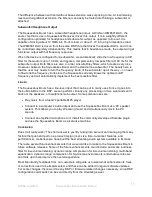
©2008 Logitech
Squeezebox Boom Audio Design
10
Figure 12: Family of low-frequency equalization curves (blue) and simulated low-frequency system response
(green). The curves show cutoff frequencies ranging from 20Hz to 137Hz in 1/3-octave steps. For clarity, the
blue curves are offset by +20 dB. The green curves correspond to the final overall frequency response of the
system (simulated in this figure). They are 4
th
-order Linkwitz-Riley high pass filters.
The method we chose for bass extension with Squeezebox Boom is to make the overall low
frequency roll-off a 4
th
-order Linkwitz-Riley filter. The reason for that choice will become clear in
the subwoofer section of this paper. By applying the compensation of Figure 12 in series with a
variable frequency 4
th
-order Linkwitz-Riley filter, we can choose any low frequency cutoff
frequency we desire as seen in Figure 12, which shows an entire family of filters with cutoff
frequencies ranging from 20Hz to 137 Hz in 1/3 octave increments. The choice of cutoff
frequency is based primarily on the final signal strength going to the speakers, and whether or
not there is a subwoofer plugged in. The true beauty of the Squeezebox Boom architecture is
that we can dynamically and silently switch among any of the filters as volume settings and/or
signal strength changes. Currently, we implement a sliding cutoff frequency based on volume
setting.
Figure 11: Actual in-box frequency response measurements of the family bass extension filters used in
Squeezebox Boom.

